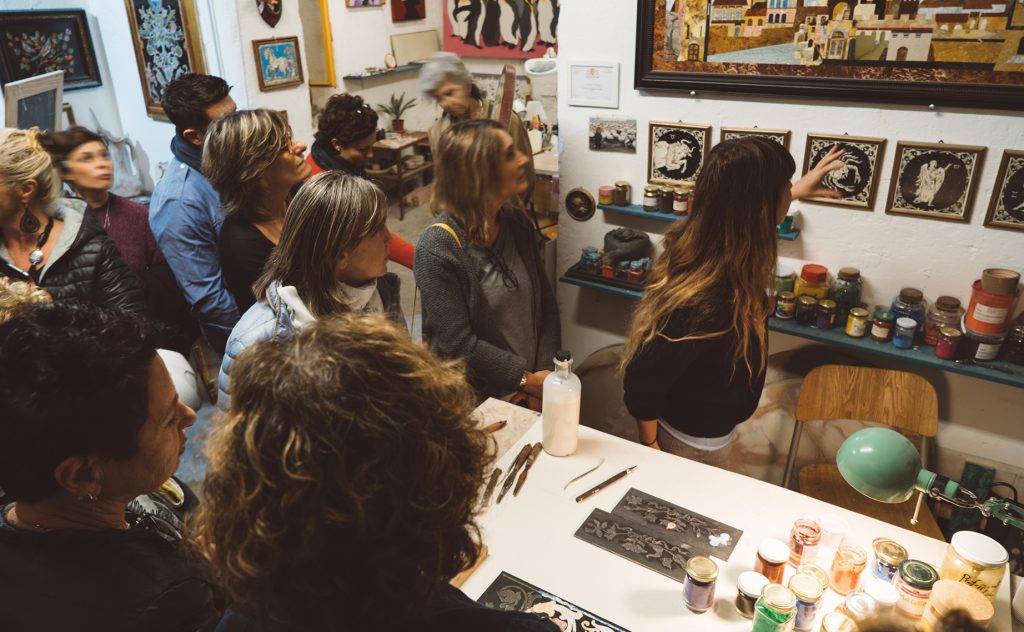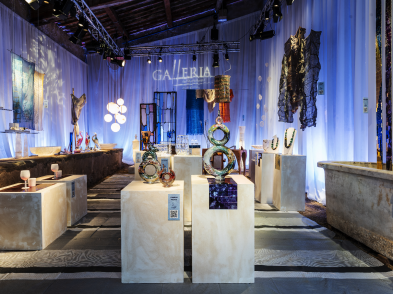Craftsmanship and Tuscany have always enjoyed an unshakeable bond, which is something that Artex, Centre for Artistic and Traditional Tuscan Crafts, has endeavoured to protect, develop, innovate and promote since 1987. Elisa Guidi, the project’s coordinator, explains the ties between artistic crafts and the region.
Tell us about Artex and the ties between Tuscany and its crafts.
Artex has worked exclusively with artistic and traditional crafts since 1995. That’s our speciality. We’ve always worked closely with the Tuscan regional government and, more recently, with the Comune di Firenze. We were among the first in Italy to hone in on the relationship between artistic and traditional crafts and territorial tourism through our earliest experiences of harnessing various methods of communication. In actual fact, it’s an intrinsic relationship because, by definition, artistic and traditional craftsmanship has deep ties with the local area through materials, culture and techniques. This applies in Tuscany and Italy, but also elsewhere, to the extent that the European Commission is currently developing geographical indications for non-food and non-farming products. Items like knives from Scarperia and alabaster from Volterra will benefit from these protections once they come into effect, which means that the territory adds value and a mark of quality to the handicrafts, and vice versa.

How does Artex promote artistic and traditional crafts?
When we started the centre, it was the artistic crafts that needed a helping hand from tourism. We sought to intercept international tourists with high spending power. That has changed over time. These days, tourism is focusing more on the artistic craft sector for the experiences it provides. Unlike mass tourism that always frequents the same museums, we also welcome many tourists that we can refer to as travellers, who are in line with the Grand Tour concept and prefer a slower form of tourism with different types of experience. Artistic and traditional crafts can play a role for them. We support our artisans in becoming more visible for these tourists through institutional and territorial marketing projects. For example, we recently organized a hike around Stia with a visit to a company that makes clothes, toys and household items in panno casentino [a traditional wool fabric made in the Casentino area of Tuscany, ed.], followed by a walk around the wool museum. Our aim is to bring more people closer to the artistic craft sector through itineraries that are integrated with the local area, with its art and culture, landscape and society. The best way to understand what artistic crafts are is to see them in context.
What’s the relationship between artistic crafts, the local area and sustainability?
The artistic craft sector is a much more sustainable manufacturing activity compared to other industries. We’re talking about environmental sustainability due to the relationship between the crafts and the local area, but social sustainability is equally important in this sector through ties with local citizens and the social aspect. Artistic crafts are like a social glue! It’s a sector that can provide job opportunities for the next generation if they decide to get involved.
How can we experience tours like the one you mention?
Online you can find out about 100 or so itineraries and approximately 400 companies have signed up to be included on the website. You can come up with your own route based on the craft, such as ceramics, or the geographical area, such as Lucca and Siena. It’s a way of linking artistic crafts and the local area, as well as providing details about each craft company with geo-referencing for each bottega. Given that the website is in Italian and English, the project is aimed at independent travellers, regardless of whether they are Italian or internationals. All the craftspeople who are featured have expressed an interest in being in direct contact with clients and have opening hours that are in line with the tourism sector. In order to vary the offering, in 2020, we added a section to the Artour website called I Borghi dell’Artigianato, small towns and villages in Tuscany, such as Pietrasanta and Seravezza, where artistic crafts have been and continue to be part and parcel of the place’s identity. Our hiking routes, which are now in the second edition, are an extension of the I Borghi dell’Artigianato project. This year, the hikes around Capannoli, Stia, Codena – Carrara and Colle Val d’Elsa are being organized in collaboration with Unicoop Firenze, and they are already all sold out! Our groups are never more than 25 people, so that everyone can fit into the craft workshops, which always tend to be on the smaller side. We also organize urban routes in Florence, called Artigianato & Aperitivo. These events are intended as an after-work activity so that local residents can discover the artistic crafts in their own city, to encourage them to visit different neighbourhoods and show them how these crafts are still an element of the urban fabric.
How do you choose the participating craft companies?
There are two ways. Either we send out invitations to take part in our projects by sending out newsletters to craft companies using an extensive database, which means that the involvement is based on their interest in participating. Over time, more and more companies have approached us and asked to be included. In this instance, we always oversee and check the information for projects that require a certain amount of selection. As a rule, we only work with craft companies that are enrolled at the Chamber of Commerce or craftspeople who have a registered VAT number.
Tell us about Firenze Creativa.
Firenze Creativa started out in 2019 as a city council project to promote the creative community, with more than 120 members signing up, including artisans, training colleges and galleries. We designed and printed maps featuring the participating botteghe in the historic centre of Florence, which we distributed in conjunction with the Comune and the tourist information centres.






